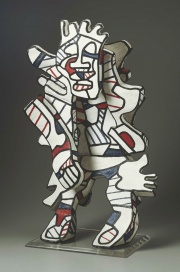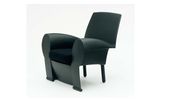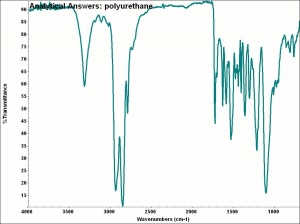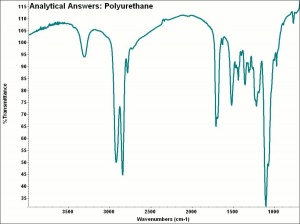Difference between revisions of "Polyurethane"
| Line 4: | Line 4: | ||
A family of polymers made by a condensation reaction of an organic isocyanate with a compound containing a hydroxyl group, such as glycol. Polymers of this type ('''ester type''') were first made in 1937 by Otto Bayer at I.G.Farben. During W.W.II, Germany made brush [[bristle|bristles]] and filtration fabrics from Perlon U, an early polyurethane. In the 1950's another type of polyurethane using an ether starting compound ('''ether type''') was used to produce elastomeric polyurethane fiber called [[Spandex fiber|spandex]]. Spandex has elastic characteristics similar to [[natural rubber]]. In addition to fibers, elastomeric polyurethanes are used for [[sealant |sealants]], [[adhesive| adhesives]], [[film| films]], and automobile bumpers. Polyurethanes can be rigid or soft, [[thermoset| thermosetting]] or [[thermoplastic]]. Additionally, they react with isocyanates to produce a foamed resin. Polyurethane resins are also used as [[coating |coatings]] where they provide excellent [[hardness (solids)|hardness]], [[gloss]], and resistance to [[weathering]], [[abrasion]], [[acid|acids]], and [[alkali |alkalis]]. Flexible and rigid polyurethane foams are used for insulation, furniture, mattresses, laminates, carpet cushions, upholstery, soundproofing, flotation devices, packaging, and filtration. | A family of polymers made by a condensation reaction of an organic isocyanate with a compound containing a hydroxyl group, such as glycol. Polymers of this type ('''ester type''') were first made in 1937 by Otto Bayer at I.G.Farben. During W.W.II, Germany made brush [[bristle|bristles]] and filtration fabrics from Perlon U, an early polyurethane. In the 1950's another type of polyurethane using an ether starting compound ('''ether type''') was used to produce elastomeric polyurethane fiber called [[Spandex fiber|spandex]]. Spandex has elastic characteristics similar to [[natural rubber]]. In addition to fibers, elastomeric polyurethanes are used for [[sealant |sealants]], [[adhesive| adhesives]], [[film| films]], and automobile bumpers. Polyurethanes can be rigid or soft, [[thermoset| thermosetting]] or [[thermoplastic]]. Additionally, they react with isocyanates to produce a foamed resin. Polyurethane resins are also used as [[coating |coatings]] where they provide excellent [[hardness (solids)|hardness]], [[gloss]], and resistance to [[weathering]], [[abrasion]], [[acid|acids]], and [[alkali |alkalis]]. Flexible and rigid polyurethane foams are used for insulation, furniture, mattresses, laminates, carpet cushions, upholstery, soundproofing, flotation devices, packaging, and filtration. | ||
| + | |||
| + | {| class="wikitable" | ||
| + | |+table of various types of Polyurethanes and their characteristics | ||
| + | |- | ||
| + | ! Types!!Properties!!Forms!!Uses | ||
| + | |- | ||
| + | ! Polyether urethane | ||
| + | | thermosset || flexible open cells || 3 | ||
| + | |- | ||
| + | ! 2 | ||
| + | | 2 || 4 || 6 | ||
| + | |- | ||
| + | ! 3 | ||
| + | | 3 || 6 || 9 | ||
| + | |- | ||
| + | ! 4 | ||
| + | | 4 || 8 || 12 | ||
| + | |- | ||
| + | ! 5 | ||
| + | | 5 || 10 || 15 | ||
== Synonyms and Related Terms == | == Synonyms and Related Terms == | ||
Revision as of 12:11, 4 July 2020
Description
A family of polymers made by a condensation reaction of an organic isocyanate with a compound containing a hydroxyl group, such as glycol. Polymers of this type (ester type) were first made in 1937 by Otto Bayer at I.G.Farben. During W.W.II, Germany made brush bristles and filtration fabrics from Perlon U, an early polyurethane. In the 1950's another type of polyurethane using an ether starting compound (ether type) was used to produce elastomeric polyurethane fiber called spandex. Spandex has elastic characteristics similar to Natural rubber. In addition to fibers, elastomeric polyurethanes are used for sealants, adhesives, films, and automobile bumpers. Polyurethanes can be rigid or soft, thermosetting or Thermoplastic. Additionally, they react with isocyanates to produce a foamed resin. Polyurethane resins are also used as coatings where they provide excellent hardness, Gloss, and resistance to Weathering, Abrasion, acids, and alkalis. Flexible and rigid polyurethane foams are used for insulation, furniture, mattresses, laminates, carpet cushions, upholstery, soundproofing, flotation devices, packaging, and filtration.
| Types | Properties | Forms | Uses | ||
|---|---|---|---|---|---|
| Polyether urethane | thermosset | flexible open cells | 3 | ||
| 2 | 2 | 4 | 6 | ||
| 3 | 3 | 6 | 9 | ||
| 4 | 4 | 8 | 12 | ||
| 5 | 5 | 10 | 15
Synonyms and Related TermsPUR; poliuretano (Esp.); polyuréthane (Fr.); poliuretano (It.); poliuretano (Port.); spandex; elastane Examples: Perlon® U [Ger.]; Lycra® [DuPont]; ApplicationsPersonal RisksUrethane burns with a bright flame producing a sharp odor and toxic fumes. Fischer Fixing Systems: [Safety Data Sheet] Collection Risks
Potential degradation products are hydrogen cyanide and ammonia. Polyether type urethanes are very susceptible to light degradation. Polyester type urethanes are very susceptible to degradation at high humidities. Polyurethane foams can yellow, become brittle and crumble. Chlorine bleach may cause degradation. Physical and Chemical PropertiesCoatings are resistant to weathering, abrasion, acids and alkalis. Attacked by aromatic solvents, chlorinated solvents, ozone, and nitrogen oxides. Spot test for detection: dimethyl amino benzaldehyde in glacial acetic acid - positive reaction gives bright yellow color (Roff et al 1971)
Working PropertiesAdditional InformationW.J.Roff, J.R.Scott, J.Pacitti (compilers) Handbook of Common Polymers:Fibres, Gilms, Plastics and Rubber Cleveland: CRC Press, Butterworth & Co., 1971. Links to Oddy Test results posted on AIC Wiki Materials Database Pages for individual materials below water-based Polyurethane tested in 2003 ComparisonsProperties of Synthetic Fibers Physical Properties for Selected Thermoplastic Resins General Characteristics of Polymers Sources Checked for Data in Record
|



